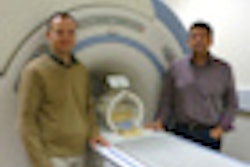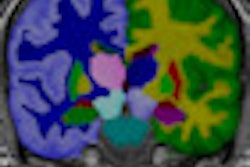Research conducted at the University of Eastern Finland in Joensuu offers new information on the limitations and applications of transcranial ultrasound therapy, according to a statement released by the university.
The research was presented this month by Aki Pulkkinen, a doctoral candidate, the niversity said. Original findings were published earlier this year in Physics in Medicine and Biology.
Pulkkinen explored two issues that could limit the applicability of transcranial ultrasound: skull-base heating and formation of standing waves.
He found the heating of the skull base during transcranial ultrasound therapy can result in hazardous temperature elevations when the modality is used close to the skull base. He developed three new methods to counteract this potentially hazardous situation. As for standing waves, Pulkkinen also found that the formation of these waves is greatly reduced when specifically designed large-area ultrasound transducers are used (Phys Med Biol, April 2014, Vol. 59:7, pp. 1679-1700).
Finally, the study introduced a model to numerically simulate clinical patient treatments performed with transcranial ultrasound therapy; predictions produced by the model were compared with observations done in previous clinical patient trials, the university said.



















